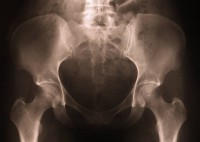
A new international study spearheaded by Spanish cancer researchers has developed a method of identifying people with a hereditary risk of cancer related to Lynch Syndrome, Science Daily reports. While the focus of the study was limited to a specific hereditary condition known to increase cancer risk, researchers believe their findings may be applicable to other hereditary cancers.
Cancer develops within the body. Errors in normal DNA replication and other issues can cause genetic alterations or mutations that interfere with normal cell functioning and may lead to cancer. Some people, however, are born with a genetic mutation that predisposes them to a certain type of cancer. An estimated 5% to 10% of all cancer tumors are hereditary through predisposition.
An inherited colorectal disease, Lynch syndrome, also known as HNPCC (Hereditary Nonpolyposis Colorectal Cancer), carries an increased risk of colon cancer and endometrial cancer. In a cooperative international effort to identify the genetic variants responsible for Lynch Syndrome, researchers around the world culled through data on thousands of genetic variants.
The significance of many of these variants is as yet unknown. However, it is hoped that consolidation of global research into a public database will allow researchers to translate data into useful clinical information, expanding our understanding of Lynch Syndrome and its genetic implications. The project is being funded and managed by the Spanish Ministry of Science and Innovation and the Scientific Foundation of the Spanish Association Against Cancer.
Identifying the genetic variants responsible for hereditary cancers may help identify at-risk families, encourage early monitoring and preventive measures, inform targeted cancer therapies and provide affected families with useful genetic counseling in the hopes of minimizing cancer risk for future generations. Researchers believe that the process they are using with Lynch Syndrome could be applied to other hereditary cancer genes.





